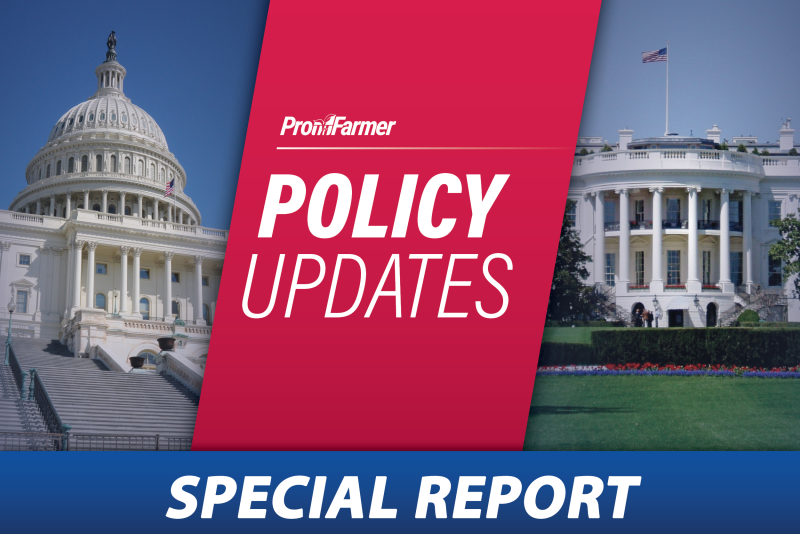The Department of Government Efficiency (DOGE) is reportedly actively reviewing agricultural checkoff programs as part of its broader initiative to evaluate and potentially reform agricultural policy and spending.
Checkoff programs fund research and promotional activities for agricultural commodities without referencing specific producers or brands. At the federal level, USDA’s Agricultural Marketing Service oversees 22 checkoff programs (link), which vary in legal authority and regulatory structure. Some operate under commodity-specific statutes, while others fall under the Commodity Promotion, Research, and Information Act of 1996. State-level checkoff programs also exist, often independently from federal programs, covering commodities such as corn, rice, apples, and table grapes.
Legal challenges have shaped checkoff programs over the years, particularly regarding First Amendment concerns over mandatory assessments funding promotional speech. The Supreme Court has ruled on key cases, including Glickman v. Wileman Bros., United Foods v. USDA, and Johanns v. Livestock Marketing Assn, each influencing the constitutionality of these programs. More recent litigation continues to test the boundaries of government involvement in commodity promotion.
The pros and cons of agricultural checkoff programs. Agricultural checkoff programs provide collective marketing, research, and education benefits, but they also face criticism for transparency, fairness, and mandatory participation.
Pros
- Market development: Expands markets and funds large-scale advertising.
- Research & innovation: Improves farming practices, technology, and sustainability.
- Education & trust: Enhances consumer confidence in agricultural products.
- Return on investment: Studies show benefits outweigh costs, with high benefit-to-cost ratios.
Cons
- Transparency issues: Small farmers criticize unclear fund allocation.
- Favoring large producers: Benefits may tilt towards larger operations.
- Mandatory fees: Farmers must contribute, even if they disagree.
- Potential misuse: Allegations of lobbying and mismanagement exist.
- Harm to specialty producers: Organic farmers may not benefit but still pay.
- Legal challenges: Constitutional disputes over mandatory participation.
Bottom line: While checkoff programs drive industry growth, concerns over equity and governance continue to spark debate and calls for reform.
DOGE’s scrutiny extends to various agricultural policies, including checkoff programs. While specific details of its investigation remain unclear, several factors indicate these programs are under review:
- Comprehensive review: Since Jan. 20, 2025, USDA has been reassessing contracts, personnel, and programs. This likely includes checkoff programs, which play a key role in agricultural policy.
- Project 2025 recommendations: A policy initiative, Project 2025, has recommended that USDA stop approving new checkoff requests and work with Congress to either eliminate the 22 existing programs or require periodic producer votes to maintain them (referendums have been held over the years).
- Potential legislative action: While DOGE cannot directly change checkoff policies, its recommendations may influence legislative efforts. Some proposals align with bipartisan bills, though agricultural committees have traditionally been reluctant to take up these issues.
Implications for checkoff programs. DOGE’s review could lead to significant changes, including:
- Increased scrutiny: A more rigorous evaluation of checkoff programs’ effectiveness and financial oversight.
- Possible restructuring: Proposals to reform checkoff programs to enhance efficiency and accountability.
- Producer voting: Consideration of regular producer votes to determine the continuation of checkoff programs.
Of note: Given the controversial nature of checkoff programs, any proposed changes would likely face both support and opposition from different agricultural groups.
How much funding is generated by checkoffs for corn, soybeans, cattle and hogs? Agricultural checkoff programs collect mandatory assessments from producers to fund industry-specific research and promotion. The revenue generated by these programs varies by commodity. Here’s an overview of the funds collected for corn, soybeans, cattle, and hogs:
Cattle (Beef) (link):
- Assessment Rate: $1 per head of cattle sold.
- Beef importers also pay into the beef checkoff…not just producers.
- Annual Revenue: In 2021, approximately $70 million was collected from cattle producers, with $43 million allocated to the Cattlemen’s Beef Board (CBB).
Hogs (Pork) (link):
- Assessment Rate: $0.35 per $100 of pork sold. For example, if you sell a market hog for $200.00, you would multiply that amount times 0.0035 (200 x 0.0035 = $0.70).
- Annual Revenue: In 2021, the National Pork Board collected over $94 million in checkoff fees from U.S. hog farmers.
Soybeans (link):
- Assessment Rate: 0.5% of the net market price of soybeans, or half of one percent. All producers marketing soybeans, except organic producers, must pay the assessment.
- Annual Revenue: Specific annual revenue figures for the soybean checkoff program is not readily available. However, a study indicated that for every dollar invested in the soybean checkoff program, there was a return of $6.5 in net profit to U.S. soybean farmers over the period from 1980-81 to 2012-13.
- The national soy checkoff was created as part of the 1990 Farm Bill.
Corn:
- There is no federal checkoff for; corn checkoffs are state level only.
- Assessment Rate: Varies by state. See links below.
- Annual Revenue: Specific annual revenue figures for the corn checkoff program are not available.
- Some state links: Iowa corn checkoff | Illinois corn checkoff | Nebraska corn checkoff | Indiana corn checkoff | Minnesota corn checkoff | Ohio corn checkoff

